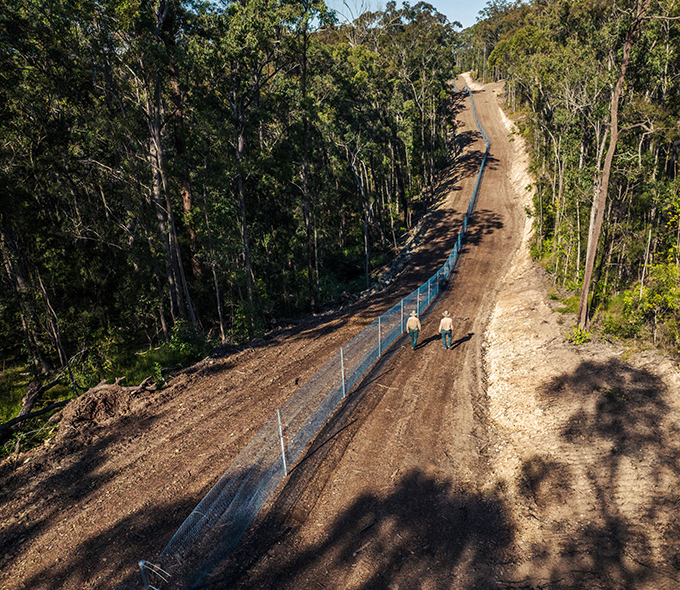Construction is complete
Construction works took 12 months to complete and included:
- various environmental and cultural assessments, plans and approvals
- building 23 km of predator fence
- installing 4 new waterway crossings complete with predator-proof flood gates.
Baseline ecological surveys complete
Over the past 3 years, baseline surveys conducted at 20 monitoring sites have captured information about:
- resident species
- ecosystem functions
- local threats.
Each monitoring site measures a range of biodiversity indicators using appropriate monitoring techniques such as:
- traps – Elliot traps, pitfall traps, artificial reptile refugia
- remote cameras – ground and arboreal cameras
- sound recorders – for recording vocalising mammals and birds
- quadrats – for recording plants, fungi, forests structure and soil function.
Eradication phase
Eradication has ramped up to remove feral predators such as cat, fox and wild dogs inside the fenced area with the aim to be declared 'feral free' in July 2025.
Techniques will include a full array of trapping, aerial and ground baiting. Four Felixer Cat grooming traps have been in operation since March 2024 and have proven to be successful to date.
Once the site is declared 'feral free' locally extinct species such as the eastern quoll will be returned to the area after a 60-year absence from the Australian mainland.
Updates on local conditions
Cedar Park picnic area will remain open during this period.
The following roads are now subject to permanent closures as part on the new feral predator-free area:
- Wittigs Road
- parts of Stockyard Creek Road
- Seams Road
- Jacks Road
- Buds Crossing Road.
For the latest information on Ngambaa Nature Reserve and other park closures and conditions, go to National Parks and Wildlife Service local alerts or call the National Parks and Wildlife Service on 1300 072 757 (13000 PARKS).
For the latest on road conditions related to this reserve, check Live Traffic NSW.
Visitors must follow any on-ground signage directions.





